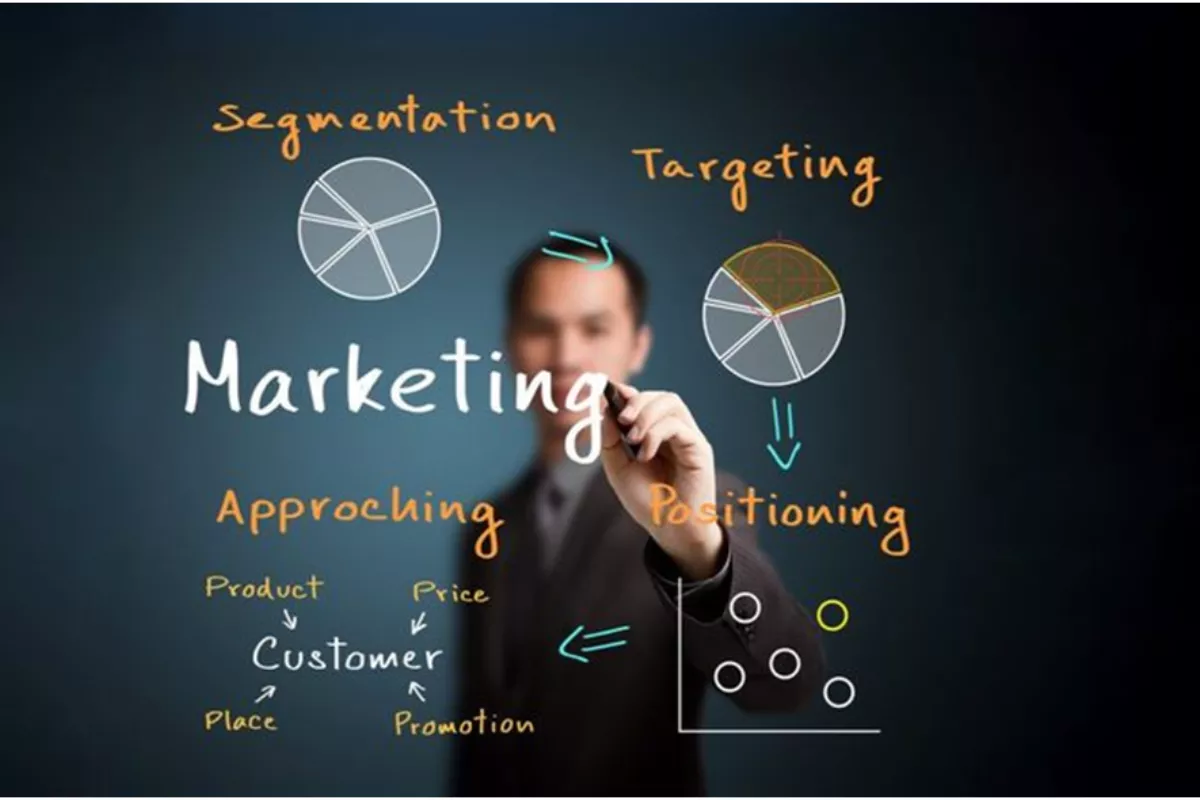Your brand is your promise!
It’s evident that having a digital marketing strategy is very important for any business owner, whether solopreneurs, non-profits, corporations, etc.
If you can actually target a client who uses search engines and browses social media, it will greatly improve your conversion rates, which in turn will lead to increased sales and revenue.
We genuinely believe that having a well-integrated digital marketing strategy is very important for all marketers out there.

Table of Contents
ToggleWhat is a digital marketing strategy?
What is most essential to us is how the strategy supports the corporate goals, how SMART objectives are established, and how it integrates with other offline marketing initiatives.
A Digital Marketing Strategy is required to provide a clear direction for online marketing efforts and channel integration.
The plan should attempt to secure the integration of digital and other marketing efforts while also supporting overall business objectives.
A digital marketing plan must align with marketing techniques to expand a business through client acquisition and retention or to meet non-profit organizations’ communications goals.
What are the Importance of Digital Marketing Strategies?
1. Develop an online value proposition.
Creating a digital marketing plan allows you to establish your online value proposition.
The value proposition aims to improve the user experience when purchasing your product or service, independent of the client persona.
This indicates that your brand attracts a wide range of buyers because it is reasonably priced and easy to purchase.
The idea is to build a base of devoted customers who adore your products and brand and will recommend them to relatives and friends.
2. Get to Know Your Customers.
You can gain a better understanding of consumer sentiment toward your products or services by implementing user feedback solutions.
Engaging in the online community allows you to quickly run market surveys and collect client feedback and evaluations.
This allows you to consolidate marketing techniques better and focus on what will work best for your business.
It also allows you to change your products and services to provide the most excellent answer for your target market.
3. Give Your Team Actionable Goals
When we say you want to give your team actionable goals, we mean you are setting clear and specific objectives.
As a result, you will have to make an excellent contribution to the whole marketing strategy.
For example, instead of saying “increase brand awareness,” you should specifically say, “Our goal is to have 20% more Instagram followers in the next three months.”
Or maybe something like, “We have to achieve a 15% open rate on our email campaigns this second quarter.”
You need to ensure that these objectives are measurable, subject to time limits, and should be linked directly to a specific marketing action.
It will help your team to understand the things that need to be done and how to achieve them.
Additionally, your team is more focused, can measure their progress, and is flexible if necessary adjustments are needed.
As a result, your digital marketing strategy increases its efficiency and effectiveness.
4. Make it Easier to Allocate your Marketing Budget.
Ensure that you have a clear plan for your marketing budget allocation, it can help a lot so you can decide where to spend your money and how to calculate your return on investment (ROI).
By creating a straightforward plan, you can easily decide which channels (like social media, email marketing, or paid ads) are the most effective for reaching your target audience and achieving your objectives.
For example, if your data results in higher leads, you might want to allocate more of your budget to this channel.
On the other hand, when you see that your email campaigns have a high conversion rate, you probably want to invest more in this email marketing channel.
So, it is crucial to have a budget allocation that is easier. That way, you ensure that your marketing dollars are spent on the tactics that are most likely to drive results.
5. Help you focus your marketing efforts, saving both time and money
You can save time and money when you focus your marketing efforts on which channels and tactics your business best fits in.
Having a clear strategy in mind, you can identify which marketing activities are most likely to achieve your goals.
It could be increasing brand awareness, driving website traffic, or boosting sales.
Instead of trying to do everything at once—like being active on every social media platform, running multiple ad campaigns, and creating endless content—a focused strategy allows you to concentrate on the activities that deliver the highest return on investment (ROI).
Let’s say, for example, if your target audience spends most of their time on Instagram, you can focus your social media efforts rather than experimenting with different platforms.
You just have to narrow down your efforts, which may result in not wasting time on low-impact activities instead, it reduces unnecessary spending.
This targeted approach ensures that your marketing is efficient and effective, helping you achieve better results with fewer resources.

4 Tips for Creating an Effective Digital Strategy
1. Recognize your clientele
No digital marketing campaign will be successful without a comprehensive understanding of who purchases your product, why they purchase it, and where they buy it.
Follow these methods to use data and demographics to build a strong audience profile that will guide your tactics:
a. Determine which channels best suit your target audience.
b. Speak the language of your clients.
c. Recognize their suffering areas and know when to turn on your emotions
d. To help with content customization and purchasing trend prediction, create buyer personas.
e. Recognize cultural differences
f. Think about collaborations, including those with influencers
g. Prioritize experiences and outcomes that can be implemented over the actual product.
h. Utilize segmentation and targeting automation techniques.
2. Audit & Assess
To create a successful strategy, you must first identify the digital marketing channels and assets you currently use and possess.
To do this, you should conduct a comprehensive channel and content audit, putting all the information into a spreadsheet to obtain a complete picture of your marketing activities (across owned, paid, and earned media).
Next, you should link each piece to your organizational goals.
For example, if your main objective is to drive revenue, look at each channel and asset (you may just want to look at the top performers if you have a lot of content) and map it to revenue.
This will allow you to identify what is currently driving revenue and what isn’t, allowing you to focus on what is successful and look for opportunities to expand on what isn’t.
3. Pay attention to the outcome.
The focus on the product and the “numbers” surrounding it (i.e., income) in marketing and product development can sometimes cause individuals to lose sight of the need that the product addresses.
Who you market to and why is what counts most.
You must know their pain areas to comprehend what customers are doing with your product or service.
In other words, if you show them what happens after they buy something, they will recall why they needed it in the first place.
4. Examine and Improve
It is imperative that you incorporate key performance indicators (KPIs) that align with critical company objectives into your strategy development process.
To gain insights into the important KPIs, you must first establish a plan to comprehend your goals and objectives and then track the measurements.
To accomplish this, you must:
- Step away from vanity metrics – ignore the data that aren’t vital to long-term success, e.g. Likes on Facebook
- KPIs should be used to measure achievement, but they shouldn’t be rigid.
- Establish ongoing timeframes for reporting, measuring, comprehending, and analyzing
- Know how to separate essential indicators in case anything doesn’t seem to be working.
Now that we have this complete set of tips, the next thing we need to consider is the type of digital marketing best for your business.

5 Different Digital Marketing Strategies
While creating a digital marketing plan, you should consider your objectives, your target audience’s preferences, and your financial constraints.
Results from specific techniques come from them more slowly than from others.
To determine what is best for your business, you must consider your options.
1. Content Marketing
Many entrepreneurs use content marketing frequently. Its main goal is to produce and provide a target audience with useful, pertinent, and consistent information.
The goal of this content is to draw viewers in and keep them interested in making purchases and finding out more about the business.
Blogging is the most popular kind of content marketing.
You don’t advertise your product while you blog.
Instead, you give readers insightful opinions, practical advice, and knowledge to benefit them at work or home.
If you are a general contractor, for instance, you may write a blog about performing home upkeep.
Although your audience is unlikely to engage you for this work, doing so establishes your credibility and trust as the expert in remodeling and home repair.
Consider incorporating seasonal recipe lists for parties and décor to add a personal touch to your business.
Content marketing encompasses the majority of digital marketing strategies.
2. Paid Advertising
Paid advertising is a known concept to most business owners.
These are radio and television advertisements and commercials.
Digitally sponsored advertisements might be found on websites, search engines, or social media platforms.
When you purchase ad space with paid advertising, you can use digital resources to choose who sees the advertisement.
Websites and search engines gather cookies to assist marketers in customizing advertising based on users’ searches.
After visiting a website about purchasing a car, you suddenly start seeing advertisements for cars on every website you visit and on social media.
That’s why digital advertisements are so appealing.
They can be specifically targeted to audiences that you know fit your customer profile or demographic and are less expensive than traditional forms of advertising.
Budget allocation is one of the best features of sponsored advertising in digital media.
Thanks to the digital environment, small-budget marketers may reach the same audience as big-budget ones.
Small business owners can now get paid advertising, thanks to this.
3. Email Marketing
You can send emails to your list of followers intended to result in sales if you already have one.
The objective of email marketing is to convert emails into customers, though you can also include non-sales-beneficial content, such as pointing readers to the most recent blog post or tip list.
When creating an email list, you must have an opt-in from your existing marketing activities, like blogging or advertising.
To stop spam bots from opting into your list and becoming dead leads, make sure you have a double opt-in procedure in place when you capture the email.
Segment your list after you’ve got it so you may create customer persona groupings that cater to particular demographics.
4. Social Media Marketing
Social media platforms are used in social media marketing to advertise and market your goods and services.
Instead of buying social media platform advertisements, you use fresh, carefully chosen content that you believe would benefit your audience.
This might include infographics, memes, product reviews, testimonies, and other entertaining and educational content for your audience.
The objective is to increase your social media following to a respectable number so that you can market goods and services and sales directly to your intended market.
It may take some time to grow your following, so you should always be creating material that people in your target audience will want to share.
Social media marketing and social media advertising are frequently used in tandem to expand an audience and cultivate a devoted following.
5. Influencer Marketing
Those with a sizable social media following due to their celebrity status or the content they post are known as influencers.
Getting an influencer to promote your brand on their social media accounts might help you grow your following and boost sales.
Influencers are like paid advertisements for your goods or services.
While some influencers will work for payment, others will work in exchange for free goods or services.
Since every influencer is unique, you’ll need to get in touch with them to find out more about their arrangement.
Understanding Your Digital Marketing Strategy
Aligning with your primary goal rather than solely focusing on your product is crucial for any digital marketing strategy or campaign.
Prioritize advantages, attend to customers’ needs, and discover what motivates them.
Additionally, you want to know how different demographics are impacted by social trends (like the current global economic crisis).
Remember that it is your responsibility to “follow” the client, not the other way around.
Conclusion
A successful digital marketing plan requires time and labor to develop. To achieve your ultimate objectives of sales and brand awareness, you may use a variety of strategies and campaigns. Be patient with your approach and track your progress to make necessary tactical adjustments.
Ready to captivate your target audience and boost your business? Let’s create a powerful digital marketing strategy together.
Last Updated on October 8, 2024
Subscribe And Receive Free Digital Marketing Tips To Grow Your Business
Join over 8,000+ people who receive free tips on digital marketing. Unsubscribe anytime.
At MantraM we strongly believe that every business or brand is unique and has its own blueprint. Just like we all have a unique purpose, so does every business. We specialize in Marketing, Social Media, & Facebook Ads.




